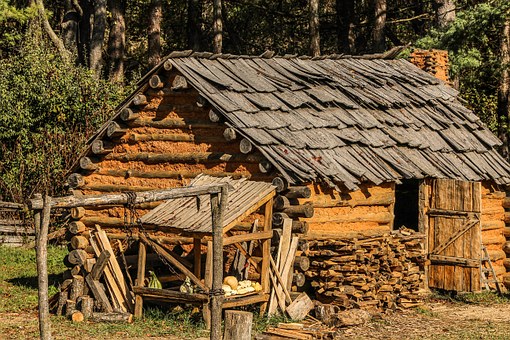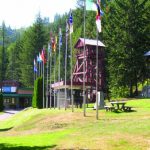How to be safer from fire
It’s a flamin’ hot summer.
The recent FireSmart course for Black Bear residents happened shortly before so much of BC’s Cariboo region sprouted wildfires, many of them “fires of note” — that is, fires that are highly visible, or which threaten people or structures. Communities are being evacuated, looters have been busy looting some of them, and several highways are closed because of fires. Here, there’s been a thunderstorm with a drenching downpour. We’ve been lucky in this area: only a few small fires have started in the Lower Columbia. So far.
With hot, dry weather, fire is always possible in a forested region like ours. If wildfire threatens our community, which homes are likely to survive, and which to burn?
There’s a “FireSmart Homeowners Manual” available on-line; just click that link to find it. It has answers to those questions, and tells how to make homes safer from wildfires. There are a few really obvious things we hardly ever consider; but taking action before it’s too late could save homes from burning.
1. Trees near a home pose a hazard, and coniferous trees such as fir, spruce, pine, cedar and larch are a greater hazard than deciduous trees because conifers burn more easily, and they burn hotter and more explosively. Keeping branches trimmed well clear of the ground reduces the hazard, and — of course — keeping the ground clear of dead branches, dry leaves and conifer needles.
2. Other plants such as shrubs right up against the home, as well as wood-piles, wooden decks, fences and anything else that could burn, also add to the fire hazard. Even tall grass along fence lines can speed a fire along.
3. Wood (especially shakes or shingles) or vinyl siding on a home is much more likely to burn than masonry stucco, brick, stone, or other such non-flammable siding. Vinyl is especially dangerous because when it burns, it produces toxic smoke.
There are flowers, ground-covers and shrubs that are more fire-resistant than others; establishing those near the home is far safer than using plants with high resin content and a propensity for catching fire.
As with vaccinations for polio and measles, there’s a “herd” benefit from reducing fire hazard on private property: the more properties in a community that are “FireSmart,” the less of it is likely to burn — the harder it is for fire to grow and spread within the community.
And any improvement in fire safety is better than none.























